Greece E-commerce Market Size
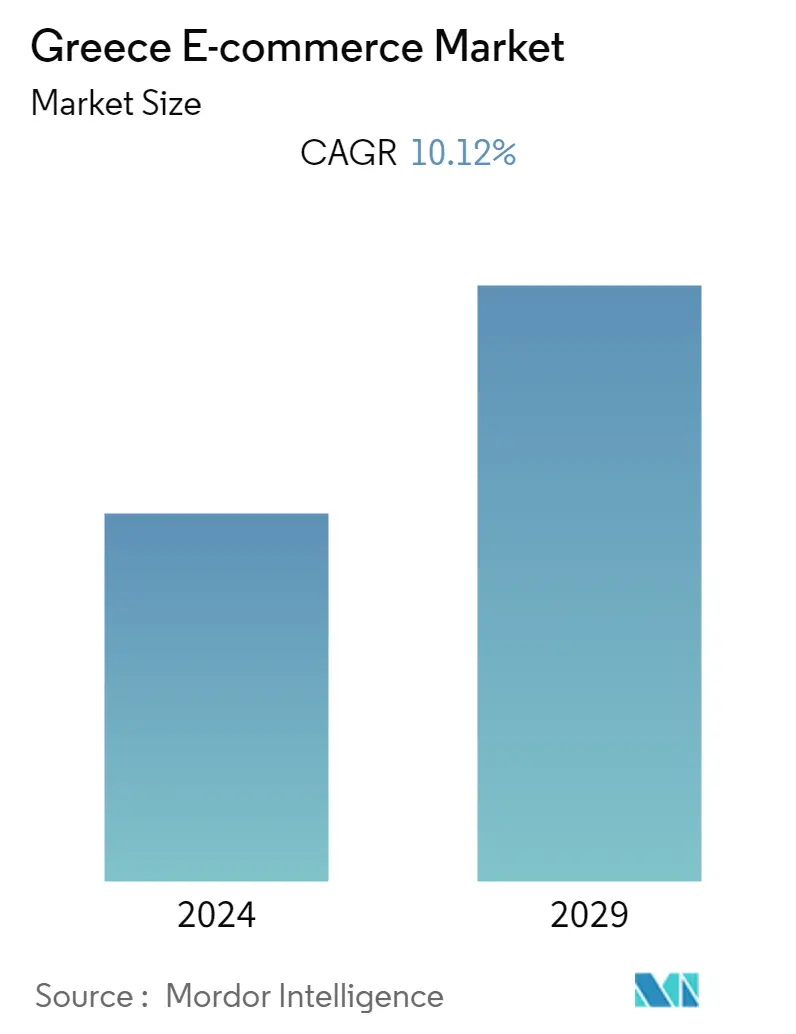
| Study Period | 2019 - 2029 |
| Base Year For Estimation | 2023 |
| Forecast Data Period | 2024 - 2029 |
| Historical Data Period | 2019 - 2022 |
| CAGR | 10.12 % |
| Market Concentration | Low |
Major Players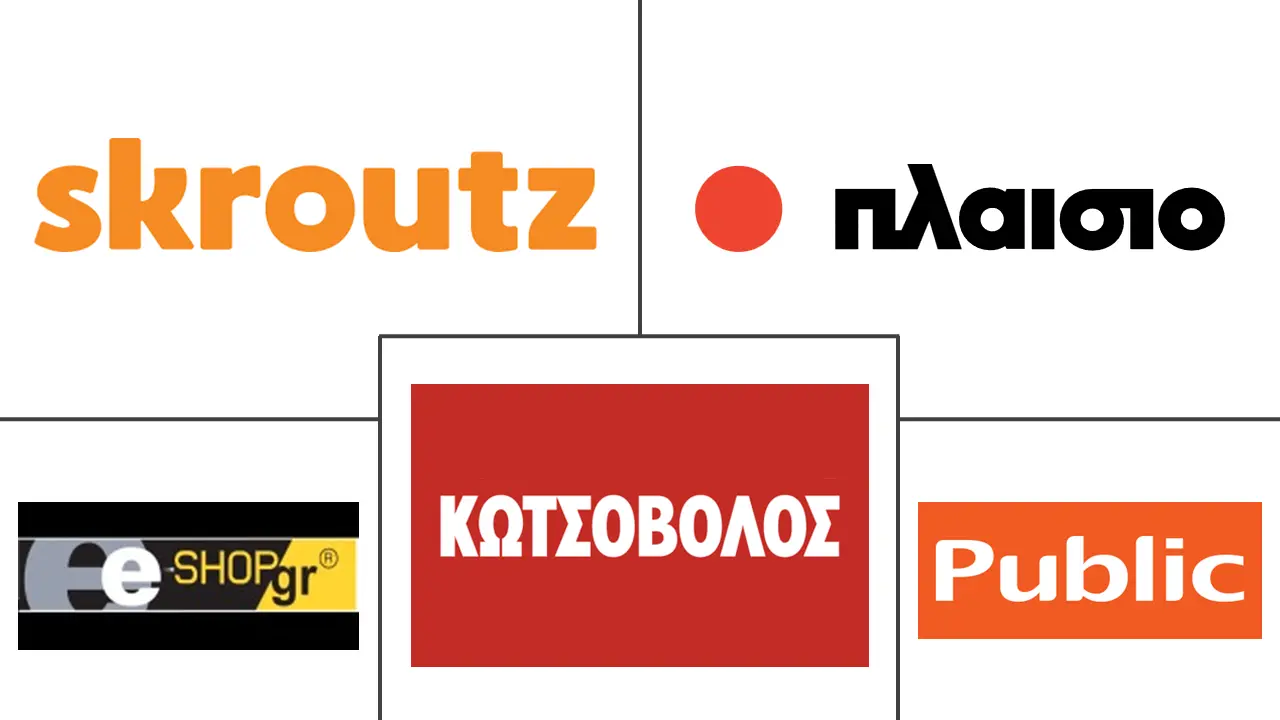
*Disclaimer: Major Players sorted in no particular order |
Greece E-commerce Market Analysis
The Greece E-commerce market is expected to register a CAGR above 10.12% during the forecast period. The European E-commerce market has been expanding rapidly in recent years, providing exciting potential for online retailers in various industries. Greece is one of Europe's most important retail marketplaces and an important E-commerce market. Regarding internet penetration, E-commerce customer proportion, and average expenditure, Greece's E-commerce market is slightly behind the European average.
- In recent years, Greece's electronic commerce (E-commerce) had grown significantly, particularly during the current COVID-19 crisis, when the Greek government had made significant strides to modernize the country digitally. The Ministry of Digital Governance modified its digital strategy, known as the "Digital Transformation Bible," first introduced in the pre-COVID era and is now planned to be developed between 2020 and 2025.
- Furthermore, according to World Bank, in 2021, about 13.42% of the Greek population fell into the 0-14-year category, 63.94% into the 15-64 age group, and 22.64% were over 65 years of age. Such a huge percentage of the population in the age group between 15 and 64 years will drive the studied market in the forecasted period, availing several E-commerce platforms, both end-user-centric and general ones.
- Similarly, the increase in internet use will guide the steady growth of the market studied. According to Eurostat, the number of internet users that bought goods and services online has increased from 45% in 2017 to 59% in 2020, an increase of 31% from 2017 and expected to reach 63% in 2021. Such a rise in online purchases in the region will significantly create an opportunity for new players to enter the market and international players to expand their presence in Greece.
- However, over the long term, companies must indulge in innovative measures to acquire new and retain old customers other than just discounting and taking a hit on the margins in the country. The introduction of new technologies, payment methods, growth of the different end users, image shopping, and Contextual and programmatic advertisements are expected to drive the Greece E-commerce market over the forecasted period.
- The COVID-19 crisis measures, according to the latest data supplied by the Greek Electronic Commerce Association (GR.EC.A), significantly enhanced the rising trend in online sales. Consumer expenditure grew 107 percent faster in May 2020 than in 2019. According to a Nielsen study, 22% of Greek shoppers made their first online supermarket purchase during the pandemic quarantine. Only 4% of shoppers would switch stores before COVID, but that number has risen to 26%. This trend is bolstered by investments announced by several significant firms interested in developing their online marketplaces.
Greece E-commerce Market Trends
This section covers the major market trends shaping the Greece E-commerce Market according to our research experts:
Significant Market Growth is Expected Post the COVID-19 Outbreak
- In Greece, only 4% of shoppers would switch stores before the pandemic, but that number has risen to 26%. This trend is bolstered by investments announced by several significant firms interested in developing their online marketplaces. According to a recent study by the Hellenic Federation of Enterprises (SEV) Digital Transformation Observatory, a company with an online presence can generate up to 20% more sales than one without.
- According to the Hellenic Statistical Authority's (ELSTAT) 2020 annual ICT report, E-commerce still has room to develop because only 47% of the population shops online. According to the 2021 iteration, the count has increased to 58.3%, which signifies still much scope for the population to adapt to utilize E-commerce platforms better. Fashion (31%), electronics & media (25%), food & personal care (19%), toys, hobby & DIY (16%), and toys, hobby & DIY (16%) account for the majority of E-commerce income in Greece.
- The economic crisis still influences greek consumers' shopping patterns and trends. Compared to the European average, Greek customers research more than they buy online. The Greek consumer's mindset has shifted due to the COVID issue. More than 60% prefer online shopping to in-store buying, and 49% say they will continue shopping online even after the COVID situation stabilizes.
- After searching online through search engines and price comparison services, Greek online buyers make more than 65% of their total physical purchases. This supports firms' significant investments in digital marketing to draw customers to their physical locations.
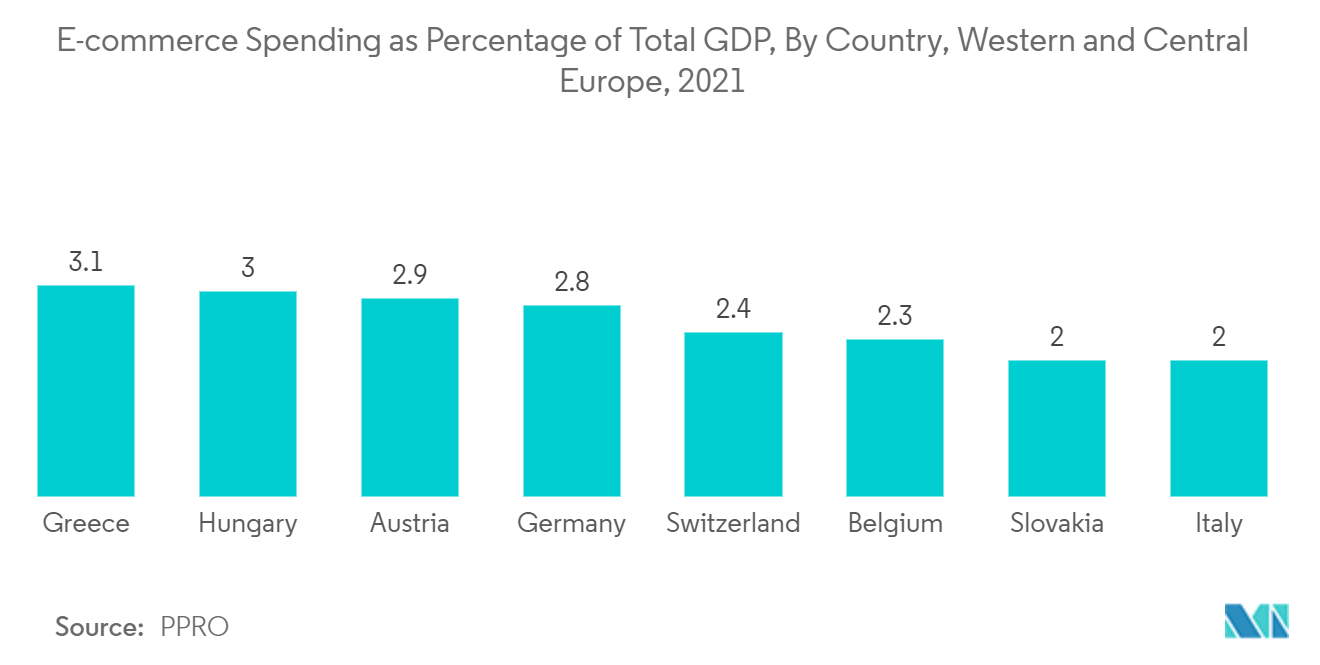
B2C Segment to Drive the Market Growth
- In January 2022, according to a half-yearly survey conducted by the E-Commerce and Business Laboratory (ELTRUN) of the Athens University of Economics and Business, in partnership with the Association of Business and Retail Sales of Greece, the total value of B2C E-commerce (products and services) for 2021 was estimated to be EUR 14 billion. The survey also suggested at least 15,000 Greek companies have several online stores and a more organized digital sales channel to have significant online sales of more than EUR 10 million.
- Similarly, the means to reach out to more Greek audiences revolves around language as a barrier, which is addressed by translated versions offered by B2C websites, leading to better reachability, website visits, and more sales recently. As reported by ITA, in the US, only one in ten consumers buy directly by clicking an ad, and 57% of consumers mentioned that they would be reluctant to purchase from a website that is not offered in their language. Certain customizations to cater to the local audience have benefitted the Greek E-commerce market.
- The price is the first reason consumers choose where and what to purchase. 25% of consumers mentioned that they do not buy across borders since shipping costs increase the final price of the item and 24% mentioned that they are concerned about fees required for customs clearance. Sellers who say shipping and customs costs when calculating the final price are more likely to attract online buyers, especially if they have new products not provided in the domestic market.
- Most B2C platforms are reached through handheld devices like smartphones and tablets. Hence, internet penetrations and network infrastructure development in the region has also played a huge role in bolstering the reach of B2C E-commerce platforms to the general public. This increased the sales of goods purchased through the internet. According to Eurostat, 63% of internet users bought goods or services online in 2021, compared to 59% in 2020 and 51% in 2019.
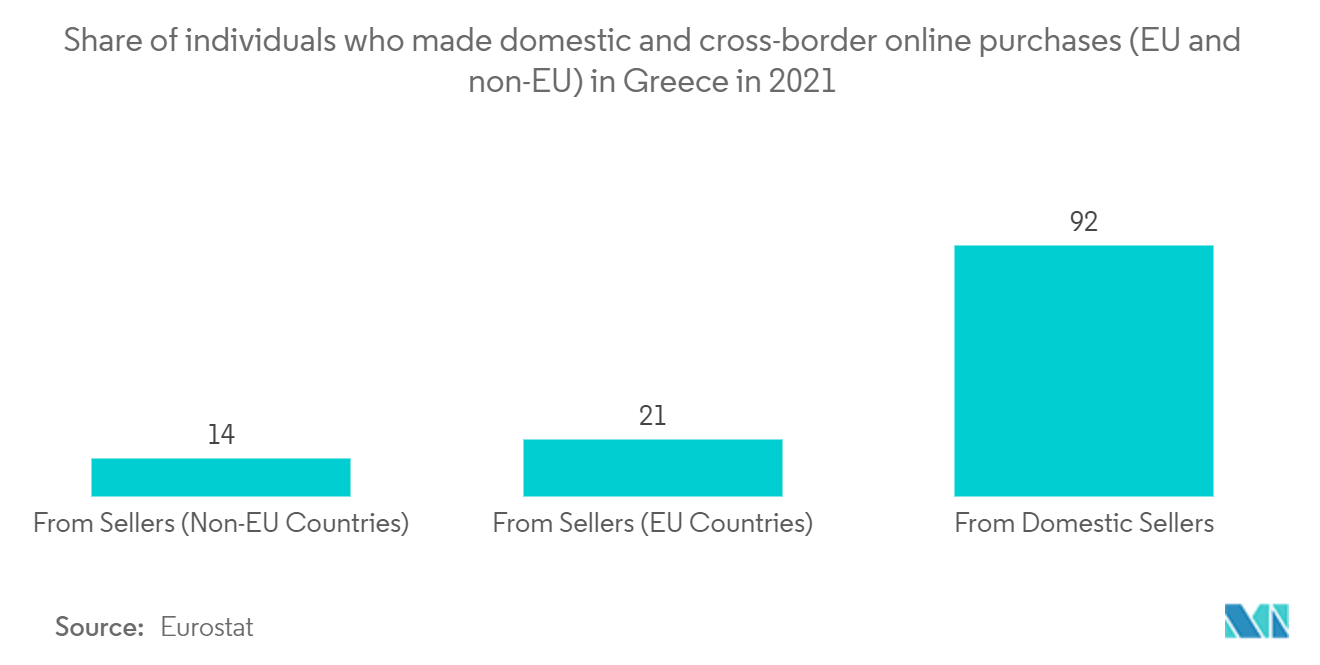
Greece E-commerce Industry Overview
Several competitors are present in the Greece E-commerce business, leading to a highly fragmented market and intense competition. Many local and worldwide firms have expanded in the E-commerce business, resulting in fierce competition. The well-established E-commerce platforms like eBay are also facing competition from new entrants, which cater to the needs of specific end-users, strengthening the overall competition.
- July 2022 - Skroutz S.A. acquired the remaining 75% share capital of Greek fintech company, EveryPay, to complete the full buyout, which was initiated two years ago. The investment signifies Skroutz's strategy to offer an innovative and secure payment solution for its growing customer base. The partnership explores the possibilities for integration between E-commerce and fintech in the Greece E-commerce market.
- April 2022 - The Catalan operator joins forces with Cellnex Telecom, Lenovo, and Red.es to develop a solution to alter E-commerce in local stores by providing virtual shoppers with an immersive shopping experience.
Greece E-commerce Market Leaders
-
Kotsovolos
-
Plaisio Computers
-
Skroutz S.A.
-
RetailWorld S.A. (public.gr)
-
e-shop.gr (Shopping Experience SMPC)
*Disclaimer: Major Players sorted in no particular order
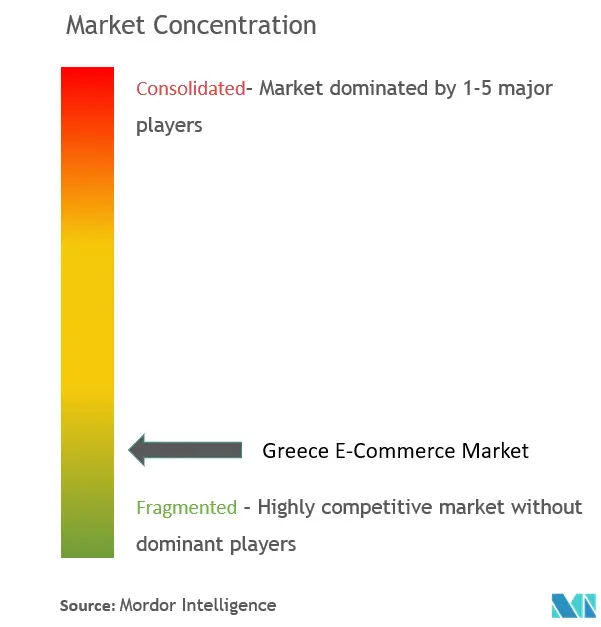
Greece E-commerce Market News
- April 2022 - Heloo, a Croatian provider of outsourced specialized services, was bought by TaskUs. Heloo is a customer care provider for European technology companies, focusing on the E-commerce and gaming industries. TASK expands its European language capabilities, diversifies its client base, and helps scale its global operations by expanding into Eastern Europe. Cross-selling prospects with Heloo's clientele in Greece, Germany, Austria, Switzerland, Finland, and other countries will benefit TASK.
- April 2022 - Swipbox partnered with Skroutz S.A. to launch the SwipBox parcel locker (battery-driven Infinity Lockers) network with Skroutz Last Mile at Skroutz checkpoint locations, offering last mile courier checkpoints for efficient delivery of nationwide shipments. The lockers were installed in March 2022 in Athens, and the parcel lockers will be located conveniently for end users, such as petrol stations, housing estates, shopping centers, etc.
Greece E-commerce Market Report - Table of Contents
1. INTRODUCTION
- 1.1 Study Assumptions and Market Definitions
- 1.2 Scope of the Study
2. RESEARCH METHODOLOGY
3. EXECUTIVE SUMMARY
4. MARKET INSIGHTS
- 4.1 Market Overview
-
4.2 Industry Attractiveness-Porter's Five Forces Analysis
- 4.2.1 Bargaining Power of Suppliers
- 4.2.2 Bargaining Power of Buyers/Consumers
- 4.2.3 Threat of New Entrants
- 4.2.4 Threat of Substitute Products
- 4.2.5 Intensity of Competitive Rivalry
- 4.3 Key Market Trends and Share of E-commerce of Total Retail Sector
- 4.4 Impact of COVID-19 on the E-commerce Sales
5. MARKET DYNAMICS
-
5.1 Market Drivers
- 5.1.1 Growing Demand from Apparel and Footwear Industry.
- 5.1.2 Penetration of Internet and Smartphone Usage
-
5.2 Market Challenges
- 5.2.1 Low Internet Penetration
- 5.3 Analysis of Key Demographic Trends and Patterns related to E-commerce Industry in Greece (Coverage to include Population, Internet Penetration, E-commerce Penetration, Age & Income etc.)
- 5.4 Analysis of the Key Modes of Transaction in the E-commerce Industry in Greece (Coverage to include Prevalent Modes of Payment such as Cash, Card, Bank Transfer, Wallets, etc.)
- 5.5 Analysis of Cross-Border E-commerce Industry in Greece (Current Market Value of Cross-Border & Key Trends)
- 5.6 Current Positioning of Greece in the E-commerce Industry in Europe
6. MARKET SEGMENTATION
-
6.1 By B2C E-commerce
- 6.1.1 Market size (GMV) for the Period of 2017-2027
- 6.1.2 Market Segmentation - by Application
- 6.1.2.1 Beauty & Personal Care
- 6.1.2.2 Consumer Electronics
- 6.1.2.3 Fashion & Apparel
- 6.1.2.4 Food & Beverage
- 6.1.2.5 Furniture & Home
- 6.1.2.6 Others (Toys, DIY, Media, etc.)
-
6.2 By B2B E-commerce
- 6.2.1 Market Size for the period of 2017-2027
7. COMPETITIVE LANDSCAPE
-
7.1 Company Profiles
- 7.1.1 Skroutz S.A.
- 7.1.2 RetailWorld S.A. (public.gr)
- 7.1.3 Plaisio Computers
- 7.1.4 Zara
- 7.1.5 e-shop.gr (Shopping Experience SMPC)
- 7.1.6 Kotsovolos
- 7.1.7 ABOUT YOU SE & Co. KG
- 7.1.8 Marks and Spencer plc
- 7.1.9 Shein
- 7.1.10 Apple, Inc.
- *List Not Exhaustive
8. INVESTMENT ANALYSIS
9. FUTURE OUTLOOK OF THE MARKET
** Subject To AvailablityGreece E-commerce Industry Segmentation
E-commerce is the buying and selling of goods and services over the internet through online shopping. However, this term is often used to describe all the seller's efforts in selling products directly to consumers. It begins when potential customers learn about a product, buy it, use it, and ideally maintain lasting customer loyalty.
The study also tracks key market metrics, underlying growth influencers, and significant industry vendors, providing support for market estimates and growth rates in the Greece E-commerce market throughout the anticipated period. The study goes on to look at Covid-19's overall influence on the ecosystem. The report's scope includes market size and forecasting for B2B and B2C segments, with the B2C channel being further split by application.
The Greece E-commerce Market is also segmented into B2C E-commerce by application (Beauty and Personal Care, Consumer Electronics, Fashion and Apparel, Food and Beverage, Furniture and Home), and B2B E-commerce.
| By B2C E-commerce | Market size (GMV) for the Period of 2017-2027 | |
| Market Segmentation - by Application | Beauty & Personal Care | |
| Consumer Electronics | ||
| Fashion & Apparel | ||
| Food & Beverage | ||
| Furniture & Home | ||
| Others (Toys, DIY, Media, etc.) | ||
| By B2B E-commerce | Market Size for the period of 2017-2027 |
Greece E-commerce Market Research FAQs
What is the current Greece E-commerce Market size?
The Greece E-commerce Market is projected to register a CAGR of 10.12% during the forecast period (2024-2029)
Who are the key players in Greece E-commerce Market?
Kotsovolos, Plaisio Computers, Skroutz S.A., RetailWorld S.A. (public.gr) and e-shop.gr (Shopping Experience SMPC) are the major companies operating in the Greece E-commerce Market.
What years does this Greece E-commerce Market cover?
The report covers the Greece E-commerce Market historical market size for years: 2019, 2020, 2021, 2022 and 2023. The report also forecasts the Greece E-commerce Market size for years: 2024, 2025, 2026, 2027, 2028 and 2029.
What future trends are expected to shape the E-Commerce Market in Greece?
Future trends in the Greece Ecommerce Market are a) Rise of AI and personalized shopping experiences b) Increased use of social media platforms for shopping c) Greater focus on sustainable and ethical consumer practices
Greece E-commerce Industry Report
The eCommerce market in Greece is experiencing significant growth, driven by various sectors and increasing user penetration worldwide. Notably, eCommerce in Greece is showing promising expansion, with a diverse range of market segments such as fashion, electronics, food and beverages, and beauty and personal care increasingly being purchased through digital channels. This growth is characterized by the sales of physical goods via desktop and mobile platforms to private end consumers (B2C), excluding digital media and B2B transactions. The market's evolution is supported by advancements in internet infrastructure, enhancing the reach and efficiency of eCommerce platforms and offering new opportunities for both existing businesses and new entrants. Key industries from retail to luxury goods are adapting to this digital shift, aiming to meet consumer demands for convenience and accessibility. For detailed insights into the eCommerce in Greece market, including share, size, revenue growth rate, and a forecast outlook, access a free report PDF download from Mordor Intelligence™ Industry Reports. This comprehensive analysis provides a historical overview and market forecast, essential for understanding the dynamic nature of the Greek eCommerce landscape.



